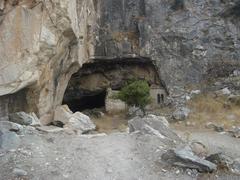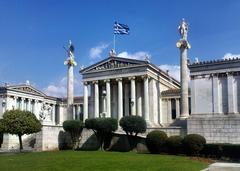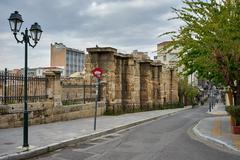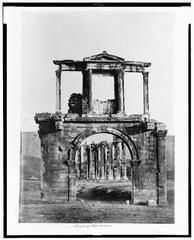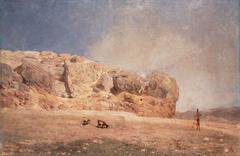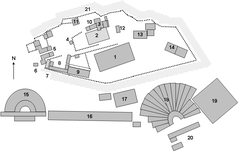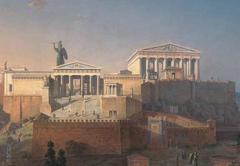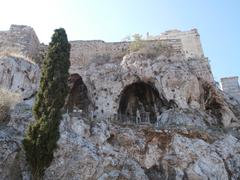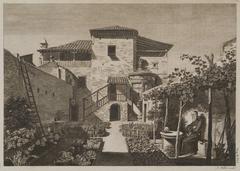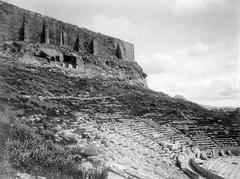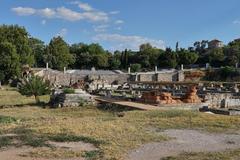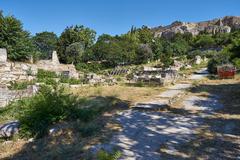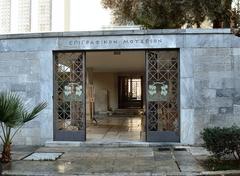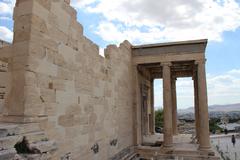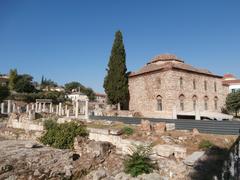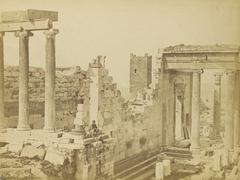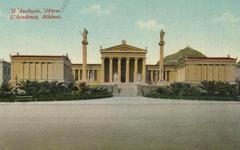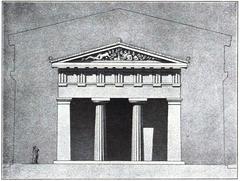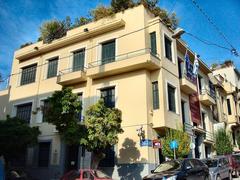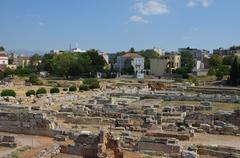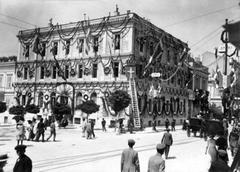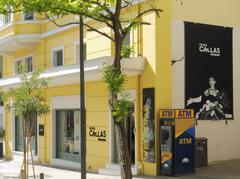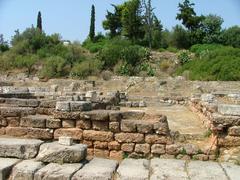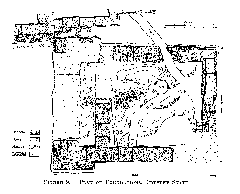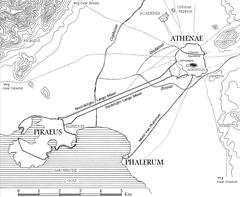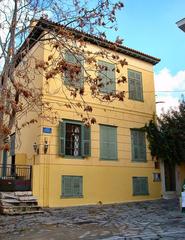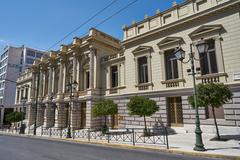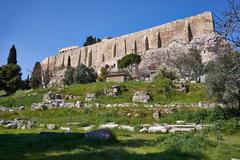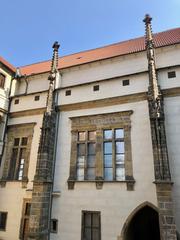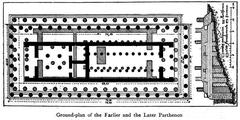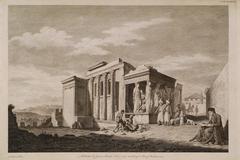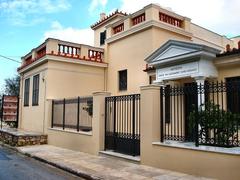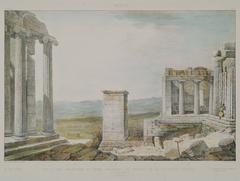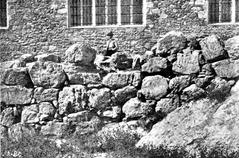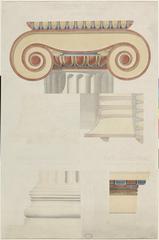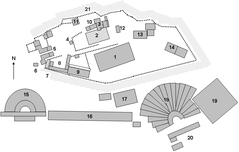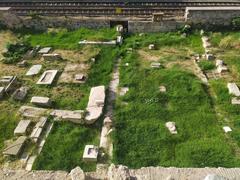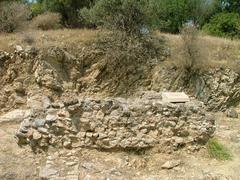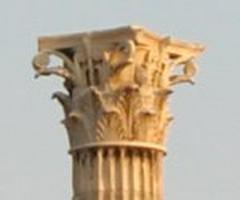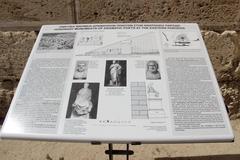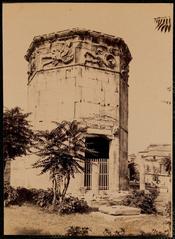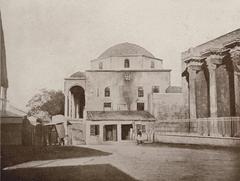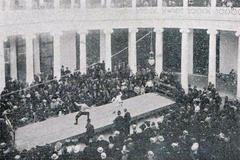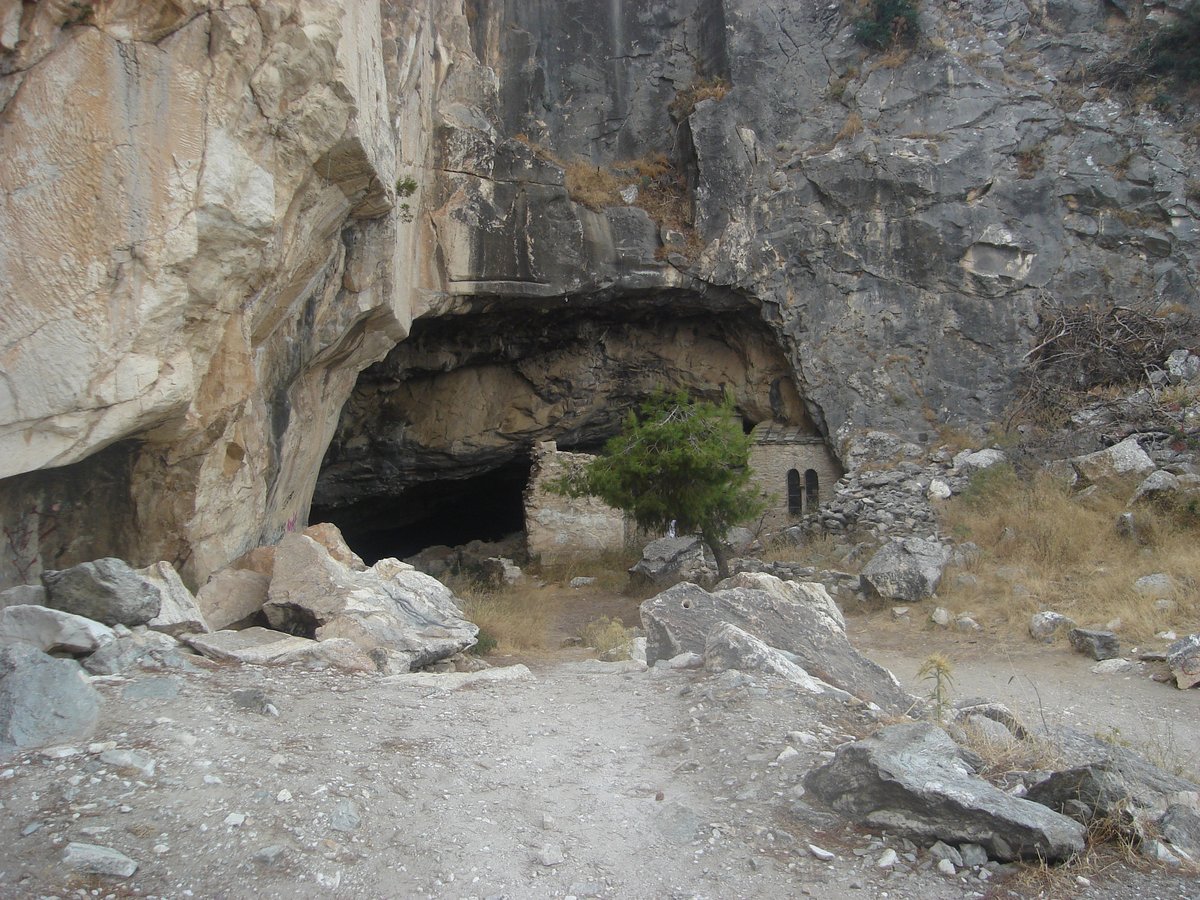
Visiting Σπηλιά Νταβέλη: History, Tickets, and Tips
Date: 23/07/2024
Introduction
Nestled on the slopes of Mount Penteli, just 18 kilometers northeast of Athens, Σπηλιά Νταβέλη, or Davelis Cave, is a captivating destination that blends natural beauty with a rich tapestry of history and myth. This cave, named after the infamous 19th-century brigand Christos Davelis, offers visitors a unique glimpse into Greece’s multifaceted past. The cave has served various roles over the centuries - from an ancient sanctuary dedicated to the god Pan and the nymphs to a Byzantine hermitage, and even a hideout for bandits (Greek Reporter) (Athens Guide). In recent history, it was used by the German occupation forces during World War II and later became a popular spot for hikers and explorers drawn by its historical significance and natural allure (Athens Info Guide). Today, Σπηλιά Νταβέλη remains a cherished part of Athens’ cultural heritage, attracting scholars, tourists, and adventure seekers alike. This comprehensive guide will delve into the cave’s fascinating history, offer practical visitor information, and provide travel tips to ensure an enriching and memorable visit.
Table of Contents
- Historical Background
- Visitor Information
- Conclusion
- FAQ
- Preservation Efforts
- Visitor Experience
- Call to Action
Historical Background
Ancient Origins
Σπηλιά Νταβέλη, also known as Davelis Cave, is located on the slopes of Mount Penteli in Athens, Greece. The cave has a rich history that dates back to ancient times. It is believed that the cave was used as a sanctuary dedicated to the god Pan and the nymphs. Archaeological evidence suggests that the cave was a site of worship and ritual activities during the classical period of ancient Greece. The cave’s connection to Pan, the god of the wild, shepherds, and flocks, is supported by the discovery of inscriptions and votive offerings (Greek Reporter).
Byzantine Era
During the Byzantine period, the cave took on a new significance. It was transformed into a Christian hermitage and a place of monastic retreat. The cave’s natural seclusion made it an ideal location for ascetic practices. The small chapel of Saint Spyridon, which is located within the cave, dates back to this period. The chapel features frescoes and religious iconography that reflect the Byzantine artistic style. The presence of the chapel indicates that the cave continued to be a place of spiritual importance well into the medieval period (Athens Guide).
The Legend of Davelis
The cave’s modern name, Σπηλιά Νταβέλη, is derived from a local legend associated with the 19th-century brigand Christos Davelis. According to folklore, Davelis used the cave as a hideout and a base of operations for his bandit activities. The cave’s labyrinthine passages and hidden chambers provided an ideal refuge for the brigand and his followers. The legend of Davelis has contributed to the cave’s mystique and has made it a subject of local folklore and popular culture (Greek Mythology).
World War II and Modern History
During World War II, the cave was reportedly used by the German occupation forces as a storage site for ammunition and supplies. The strategic location of the cave made it a valuable asset for military purposes. In the post-war period, the cave continued to attract attention due to its historical and cultural significance. In the 1960s and 1970s, the cave became a popular destination for hikers and explorers, drawn by its natural beauty and historical intrigue (Athens Info Guide).
Archaeological Discoveries
In recent years, archaeological excavations have provided new insights into the cave’s historical significance. Researchers have uncovered artifacts and remains that shed light on the cave’s use over the centuries. These discoveries include pottery fragments, tools, and religious artifacts that span different historical periods. The ongoing archaeological work continues to reveal new aspects of the cave’s history and its role in the cultural landscape of the region (Archaeology News Network).
Visitor Information
Visiting Hours and Tickets
Davelis Cave is open to visitors throughout the year, but it is advisable to check the official website or contact local tourism offices for the most current visiting hours and ticket information. Tickets can typically be purchased on-site, and prices may vary depending on the season and any special events or guided tours.
Guided Tours and Events
Guided tours are available and offer a comprehensive overview of the cave’s history and significance. These tours often include access to areas that are otherwise restricted. Special events, such as historical reenactments or cultural festivals, are occasionally held at the cave, enhancing the visitor experience.
Travel Tips and Nearby Attractions
For those planning a visit, it is recommended to wear comfortable walking shoes and bring a flashlight, as some areas of the cave can be dimly lit. The surrounding area of Mount Penteli offers hiking trails and scenic views, making it a perfect destination for nature enthusiasts. Nearby attractions include the Penteli Monastery and the ancient quarries of Mount Penteli, which supplied marble for the Parthenon.
Conclusion
The historical background of Σπηλιά Νταβέλη is a testament to its enduring significance in the cultural and historical landscape of Athens. From its ancient origins as a sanctuary to its role in local legend and modern-day tourism, the cave continues to captivate and inspire those who visit. The ongoing preservation efforts and archaeological research ensure that the cave’s rich history will be appreciated by future generations.
FAQ
What are the opening hours of Davelis Cave?
The opening hours of Davelis Cave can vary, so it is best to check the official website or contact local tourism offices for the most up-to-date information.
How much do tickets to Davelis Cave cost?
Ticket prices for Davelis Cave may vary depending on the time of year and any special events. It is advisable to check the official website or contact local tourism offices for current pricing.
Is Davelis Cave accessible to people with disabilities?
Some areas of Davelis Cave may be challenging to access for people with disabilities due to uneven terrain and dim lighting. It is recommended to contact the site in advance to discuss accessibility needs.
Preservation Efforts
Efforts to preserve and protect Σπηλιά Νταβέλη have been ongoing. The cave and its surroundings are part of a protected area, and measures have been taken to ensure that its historical and natural features are maintained. Conservation work on the chapel of Saint Spyridon and other historical structures within the cave has been carried out to preserve their integrity. Additionally, the cave is monitored to prevent damage from vandalism and unauthorized access (Greek Ministry of Culture).
Visitor Experience
Visitors to Σπηλιά Νταβέλη can explore the cave’s fascinating history through guided tours and informational displays. The cave’s unique combination of natural beauty and historical significance makes it a memorable destination. The surrounding area offers hiking trails and scenic views of Mount Penteli, providing a rich experience for nature enthusiasts and history buffs alike. The cave’s accessibility and the efforts to enhance visitor experience ensure that it remains a cherished part of Athens’ cultural heritage (Athens Walking Tours).
Call to Action
To stay updated on the latest news and events related to Davelis Cave, download our mobile app Audiala, follow us on social media, and check out other related posts on our website.
References
- Greek Reporter. (2021). Exploring Davelis Cave. https://greekreporter.com/
- Athens Guide. (2021). Davelis Cave - History and Significance. https://athensguide.com/
- Athens Info Guide. (2021). Historical Significance of Davelis Cave. https://athensinfoguide.com/
- Athens Walking Tours. (2021). Visitor Experience at Davelis Cave. https://athenswalkingtours.gr/
- Greek Ministry of Culture. (2021). Preservation Efforts for Davelis Cave. https://culture.gov.gr/
